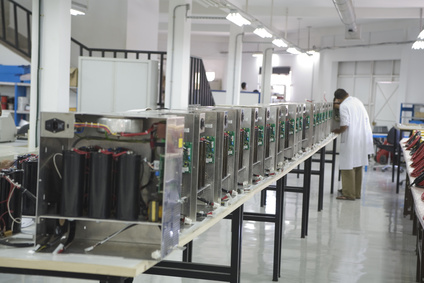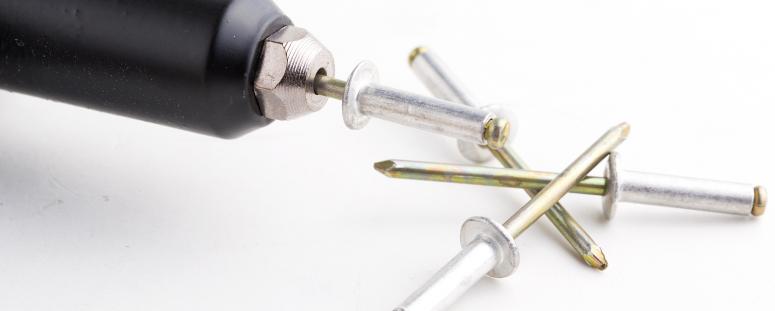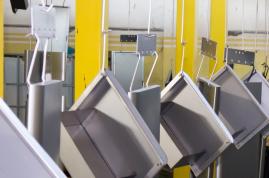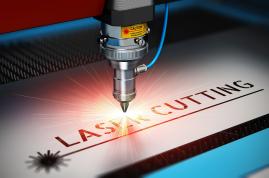Welding is the most used and best known way to assemble parts. Welding is also validated and certified for the assembly of large equipment undergoing vibratory and physical constraints.
Welding assembly
Welding is the most used and best known way to assemble parts. Welding is also validated and certified for the assembly of large equipment undergoing vibratory and physical constraints.
Nevertheless, welding also involves significant constraints regarding its implementation:
- Welding operations generate a release of toxic smoke. Welding stations need to be equipped with systems for extracting and treating these fumes. It’s a costly investment for the manufacturer, which only partially reduces the risk to the welder's health.
- Welding generates emissions of light and molten metal. The welder needs to be equipped with specific equipment along with the implementation of very strict safety rules. For example, if a molten pool touches the welder's skin, the skin burns instantly.
- Welding operations of an assembly of parts requires time to achieve weld quality. The welder must ensure that the assembly is well maintained (with a welding jig, for example). The welding operator also needs to inspect the assembly progressively during welding. These are long operations that are expensive.
- Personnel carrying out the welding must be qualified. Training is long and the welder's job is strainful. Therefor making these profiles hard to come across, difficult to retain, and resources with high salaries.
- Welding impacts the material through the distortion of its technical characteristics. The heat and fusion of the metal modify its properties.
- A part that has already received surface treatment will be degraded at least locally by the welding operation. Going over the part again, precisely where it was welded is necessary, particularly the surface treatment (rust treatment, finishing paint, etc.).
- A welded assembly is difficult to "disassemble" without damaging the part. An operation like this inevitably requires to be resumed to restore the part to its initial state.
- Welding operations generate a release of toxic smoke. Welding stations need to be equipped with systems for extracting and treating these fumes. It’s a costly investment for the manufacturer, which only partially reduces the risk to the welder's health.
Mechanical assembly
Assembly can also be done traditionally using a screw and a nut. The torque on the nut puts tension onto the screw to perform the assembly of 2 pieces. This solution also has drawbacks:
- an imprecise solution that generates significant adjustment times,
- a loss of energy due to friction,
- a risk of disconnection of the assembly, requiring maintenance operations to regularly check and tighten the nuts; especially for assemblies subject to recurrent vibrations (example: railroad tracks).
There are now rivets, structural rivets and crimping bolts, as well as suitable installation tools. These fasteners are a very interesting alternative to traditional screw / nut systems or welding.
- an imprecise solution that generates significant adjustment times,
Rivets, structural rivets and crimp bolts: a beneficial assembly solution
- Crimp bolts are a very precise operation since traction is exerted on the shaft which creates a deformation, making a bulge and fixing the 2 materials together. This deformation of matter creates an abutment. The advantage is the durability of the binding and its accuracy.
- Structural rivets are suitable when access is only possible on one side (blind rivet), with no control needing to be performed on the inaccessible side.
An efficient, fast and economical solution
Depending on the rivet or the bolt and the geometry of the part, the rivet nosepiece is adapted by ferrules. The effort is set on the machine with various advantages:
- very fast staff training,
- assembly is performed almost instantly,
- no control is necessary because there are no shavings or material deterioration,
- no maintenance required,
- very resistant to vibrations due to the nature of the component used,
- assembly of finished parts without degradation of the part (possibility to finish the subassemblies and then finish the assembly without external treatment).
The economic gain is quite substantial compared to welding or mechanical assemblies. Human resource management is also made easier due to less qualified profiles being required.
Copyright - Reproduction prohibited without the written permission of Metal-Interface- Crimp bolts are a very precise operation since traction is exerted on the shaft which creates a deformation, making a bulge and fixing the 2 materials together. This deformation of matter creates an abutment. The advantage is the durability of the binding and its accuracy.
Metal-Interface takes great care to protect your privacy: when you submit a request or ask a question, your personal information is passed on to the supplier concerned or, if necessary, to one of its regional managers or distributors, who will be able to provide you with a direct response. Consult our Privacy Policy to find out more about how and why we process your data, and your rights in relation to this information. By continuing to browse our site, you accept our terms and conditions of use.
 Riveted assembly Technical article
Riveted assembly Technical articleRiveted assembly versus welding or mechanical assembly


